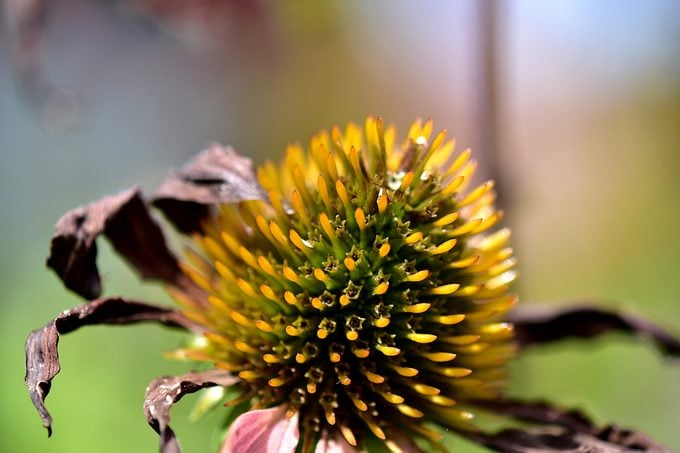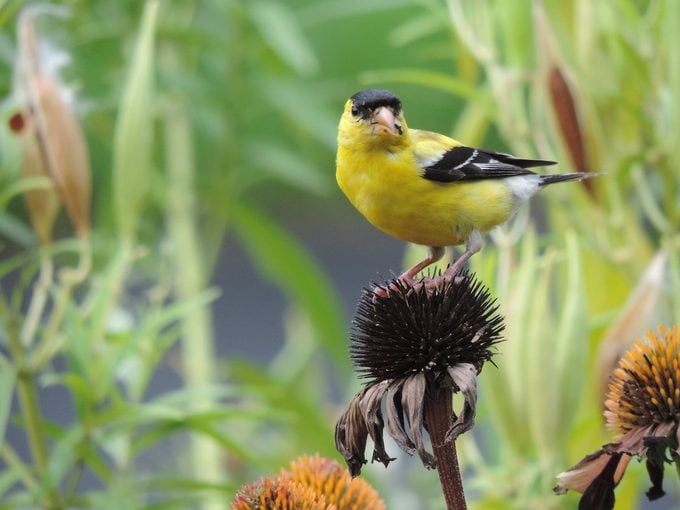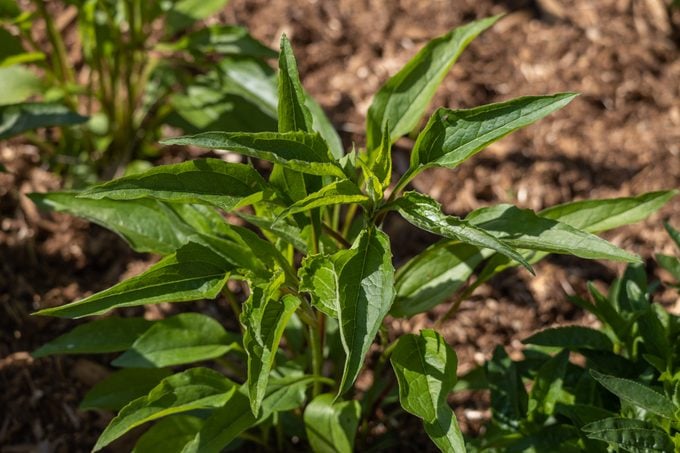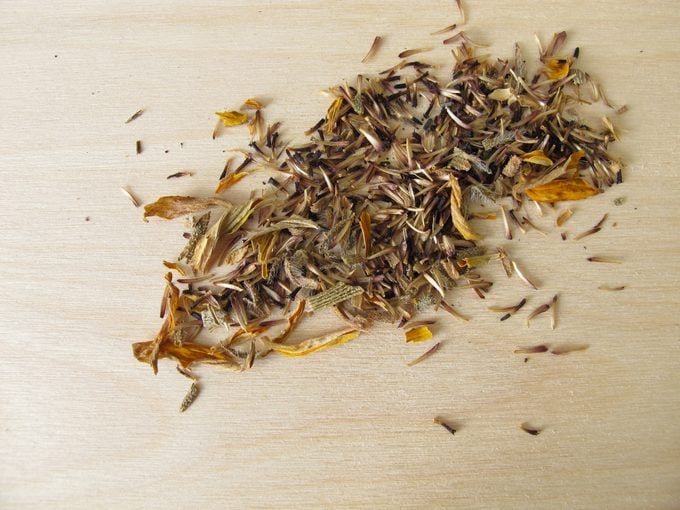How to Grow Coneflowers From Seeds
Updated: Jul. 31, 2023
Plant coneflower seeds now for lots of wildlife benefits in the future!
Plant Coneflower Seeds in Your Garden

Purple coneflower is incredibly popular in wildlife and pollinator gardens, and for good reason. This hardy plant, native to the central and eastern United States, attracts butterflies, hummingbirds, and bees with its nectar-rich blooms. When blooms fade, the seed-laden heads draw hungry birds like goldfinches. What’s more, coneflowers make excellent cut flowers, and thrive in most gardens with little extra care. Here’s everything you need to know about how to grow coneflower seeds in your own yard.
- Botanical name: Echinacea purpurea
- Zones: 3 to 9
- Soil: Well-draining
- Light needs: Full sun to partial shade
- Size: 2 to 4 feet high
- Attracts: Butterflies, birds, hummingbirds and bees
When to Plant Coneflower Seeds
There are a few opinions about the best time to plant coneflower seeds, and even botanists aren’t exactly sure which is best. Some believe these seeds need cold stratification, which means exposing them to cold moist conditions to encourage them to germinate. To achieve this, you can direct-sow coneflowers in your garden in late fall or early winter. A season’s worth of cold rain or snow should lead to lots of seedlings in the spring.
Others believe there’s no need to worry about cold stratification. They recommend sowing coneflower seeds in the garden in the spring after the danger of frost has passed. You can also start seeds indoors about 8 to 10 weeks before the average date of your last spring frost.
Psst—birds and butterflies also love black-eyed Susan flowers.
How to Plant Coneflower Seeds

Regardless of when you choose to start coneflowers, be sure not to bury the seeds too deep, since they require sunlight to germinate. Sow seeds on the surface of the soil and press them down firmly. Don’t scatter any soil over top, and ensure the seeds receive plenty of sunlight, at least four hours a day.
Well-drained soil is key, but it doesn’t need to be too rich. In fact, overly rich soil can cause abundant foliage but fewer flowers. Mix clay soils with a bit of compost or even sand to improve drainage. Keep seedlings regularly moist but not soggy until the plants are established.
Prairie coneflower thrives in hot, sunny spots.
When Do Coneflower Seedlings Emerge?

Seedlings emerge in early spring. Look for green leaves with a reddish back to them, so you don’t accidentally pull them out as potential weeds.
It’s important to note that most coneflowers spend the first year of their life establishing strong root systems and healthy foliage. Generally, they don’t bloom until the second or even third year, so be patient! When the plants are old enough to flower, you’ll see buds by midsummer. Deadhead regularly to encourage abundant blooms that last until early fall.
You’ll be dazzled by award-winning Cheyenne Spirit coneflower.
What Problems Can Affect Coneflower Seedlings?
Soggy soil and lack of sun are the two biggest problems with coneflowers. Too much shade causes floppy stems and fewer flowers, while soggy soil can kill your plants altogether, causing them to rot. If you can’t provide the conditions they need to grow in the ground, coneflowers also grow well in containers, where you can better control the soil and exposure.
When it comes to coneflower pests, be on the lookout for aster leafhoppers, which spread asters yellow disease. Infected plants show unusual growths from the seed heads.
Check out the 11 best coneflower plants to grow.
Can You Harvest and Save Coneflower Seeds?

Coneflowers are prolific self-sowers, so don’t be surprised if you find new seedlings surrounding your plant each spring. You can also harvest seeds from your coneflowers in the fall. (Be aware that some hybrid varieties may be sterile.) Here’s how to harvest and save purple coneflower seeds:
- Stop deadheading your plant in early fall, reduce watering, and allow spent flower heads to set seed.
- If birds frequently eat your seeds before you can harvest them, cover plants with netting.
- Let the seeds dry on the plant for about a week after the petals fall.
- Trim dried seed heads, keeping a long stem attached.
- Gather stems, and place seed head-down into a paper bag. Tie the bag with string or a rubber band, and hang in a cool, dry place. Shake the bag every few days to encourage seeds to fall.
- After a week, separate seeds from chaff, then lay them out to dry for a few weeks longer.
- Store seeds in a cool dry place until you’re ready to plant them.
Next, don’t miss colorful pictures of coneflowers in bloom.




















